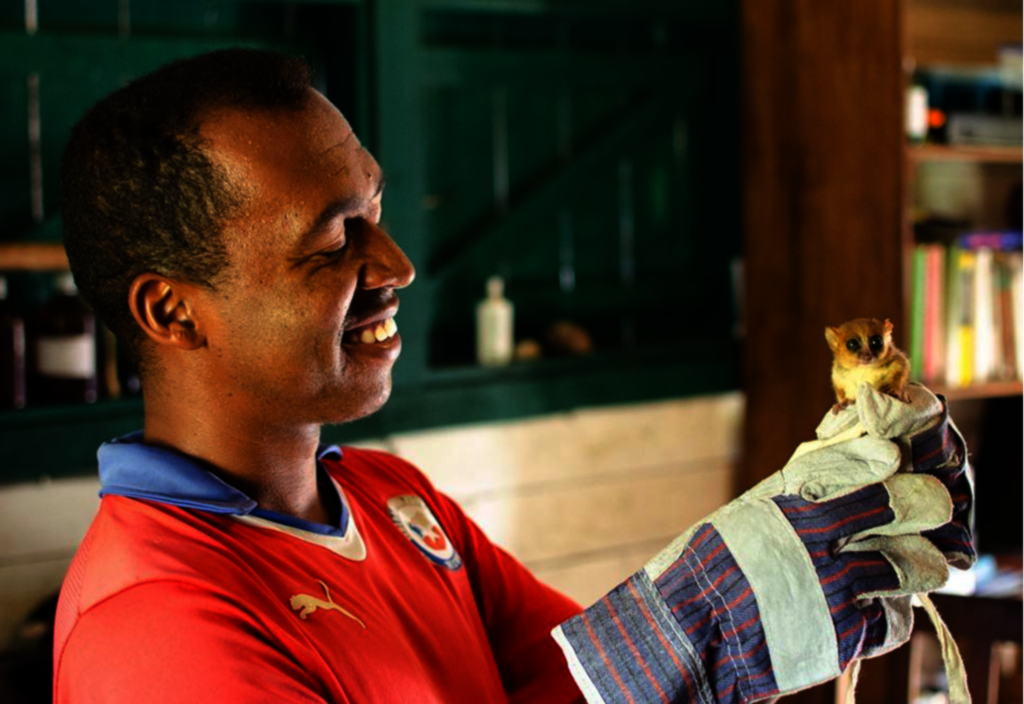By Samantha Ambler | Forestry Specialist
On Earth Day 2019, highlighting threatened and endangered species seems more crucial than ever, so we thought we’d take a step back and remind ourselves why this project is so important.
Madagascar is widely regarded as a top biodiversity conservation priority for its high overall diversity, levels of endemism and rates of deforestation. Unfortunately, it’s thought that approximately only 10% to 15% of the original forest cover remains, with deforestation continuing at around 1% annually. With Madagascar’s high population growth, its natural resources are increasingly put under strain for people’s energy, food and construction needs. Slash and burn agriculture or ‘tavy’ as it’s locally known, along with unsustainable logging has left Madagascar’s forests in unconnected and depleting fragments.
The littoral forest, a unique closed forest ecosystem occurring in close proximity to the ocean and in sandy substrates, were once thought to have formed a continuous 1,600km band along the east coast of Madagascar. Unfortunately, only around 10% of that original littoral forest remains within isolated forest parcels, yet still contain approximately 1,535 plant species or around 13% of Madagascar’s total native diversity. High endemism, with 25% of plant species in the littoral forests found only in this vegetation type, meaning that they should be among the priority sites recommended to the government for plant conservation and incorporation into the protected areas network. The Sainte Luce Littoral Forest (SLLF) represents 2.4% of Madagascar’s remaining littoral forest extent, harbouring exceptional floristic diversity and many threatened and endangered species that are found nowhere else in Madagascar.
The SLLF, comprising 15 diminishing fragments contains three lemur species, of which, the southern woolly lemur (Avahi meridionalis) is listed as endangered by the IUCN. The Anosy mouse lemur (Microcebus tanosi) and the Thomas’ dwarf lemur (Cheirogaleus thomasi) are currently under assessment, but likely will be listed as endangered due to extensive habitat degradation. With habitat destruction and fragmentation diminishing suitable habitats and inhibiting species movement within the littoral forests, these lemur species face an uncertain future.
Reconnecting forest fragments with biological corridors is an effective and successful conservation strategy that will be employed to facilitate movement of biodiversity and especially threatened and endangered lemur species. The importance of reconnecting these forest fragments is also highlighted through the fact that three of these lemurs; Avahi meridionalis, Cheirogaleus thomasi and Microcebus tanosi are not only nocturnal, but cannot traverse over open land between the forest patches. Therefore corridors between fragments are considered a conservation priority for the SLLF to provide wildlife with greater accessibility to space and resources, consequently increasing home range availability and allowing for larger populations to exist. The effectiveness of using corridors as a lemur conservation strategy will be assessed by collecting long term research through the development of line transects and camera trap technology to understand if and when these lemur species will utilise the corridors throughout their growth.
Project reports on GlobalGiving are posted directly to globalgiving.org by Project Leaders as they are completed, generally every 3-4 months. To protect the integrity of these documents, GlobalGiving does not alter them; therefore you may find some language or formatting issues.
If you donate to this project or have donated to this project, you can receive an email when this project posts a report. You can also subscribe for reports without donating.
Support this important cause by creating a personalized fundraising page.
Start a Fundraiser